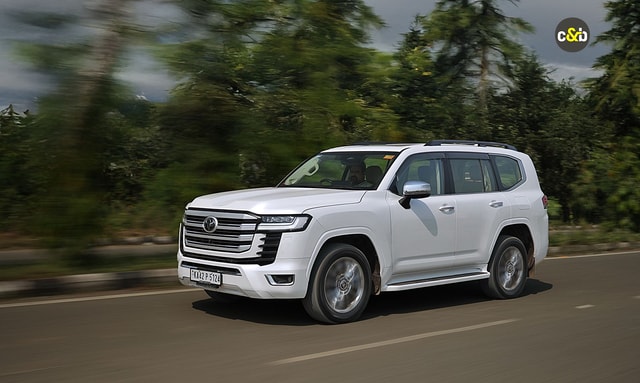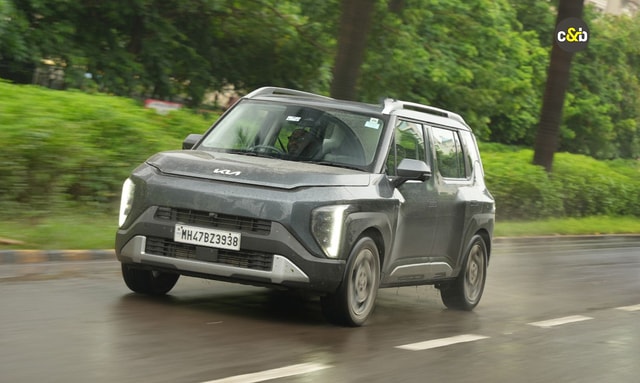Hyundai Creta Electric vs Tata Curvv EV Comparison: Compact Electric SUVs Face-Off
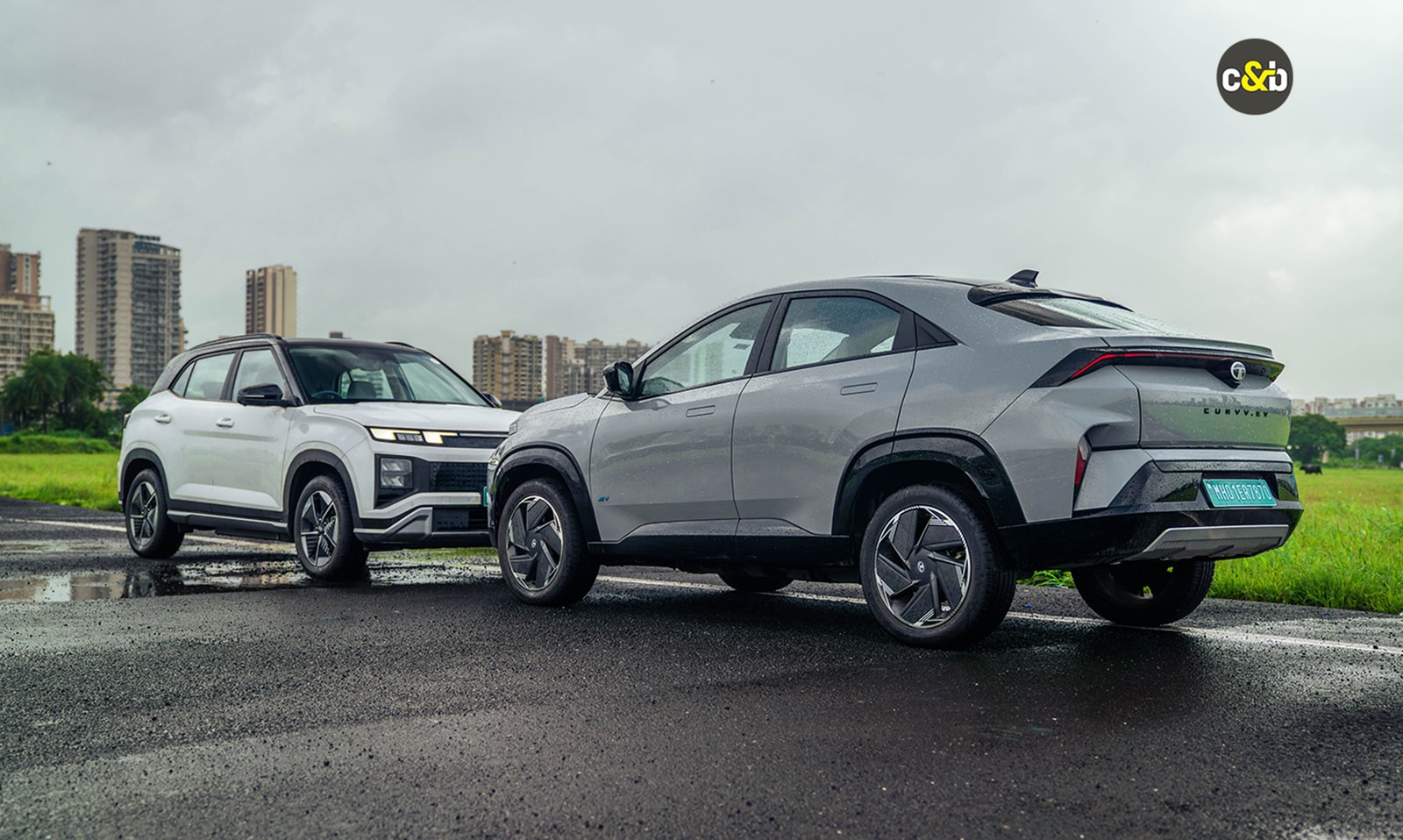
- Top-spec variants of Creta Electric and Curvv EV separated by Rs 2 lakh.
- Curvv EV offers quicker fast-charging compared to the Creta Electric.
- Creta offers more progressive everyday driving than the Curvv EV.
Electric vehicles have started to proliferate in the mass market end of the Indian market in recent years. What once started as scant options, such as the Nexon EV and Tigor EV from Tata and the Mahindra E2O Plus and eVerito, has now grown to straddle multiple segments with new models continuing to arrive almost every year. This has meant an increase in competition and the entry of some popular internal combustion nameplates into the EV market. None encapsulates this more than the 2025 Creta Electric, Hyundai’s entry into the mass EV market on the back of a nameplate leading the compact SUV segment for the better part of a decade.
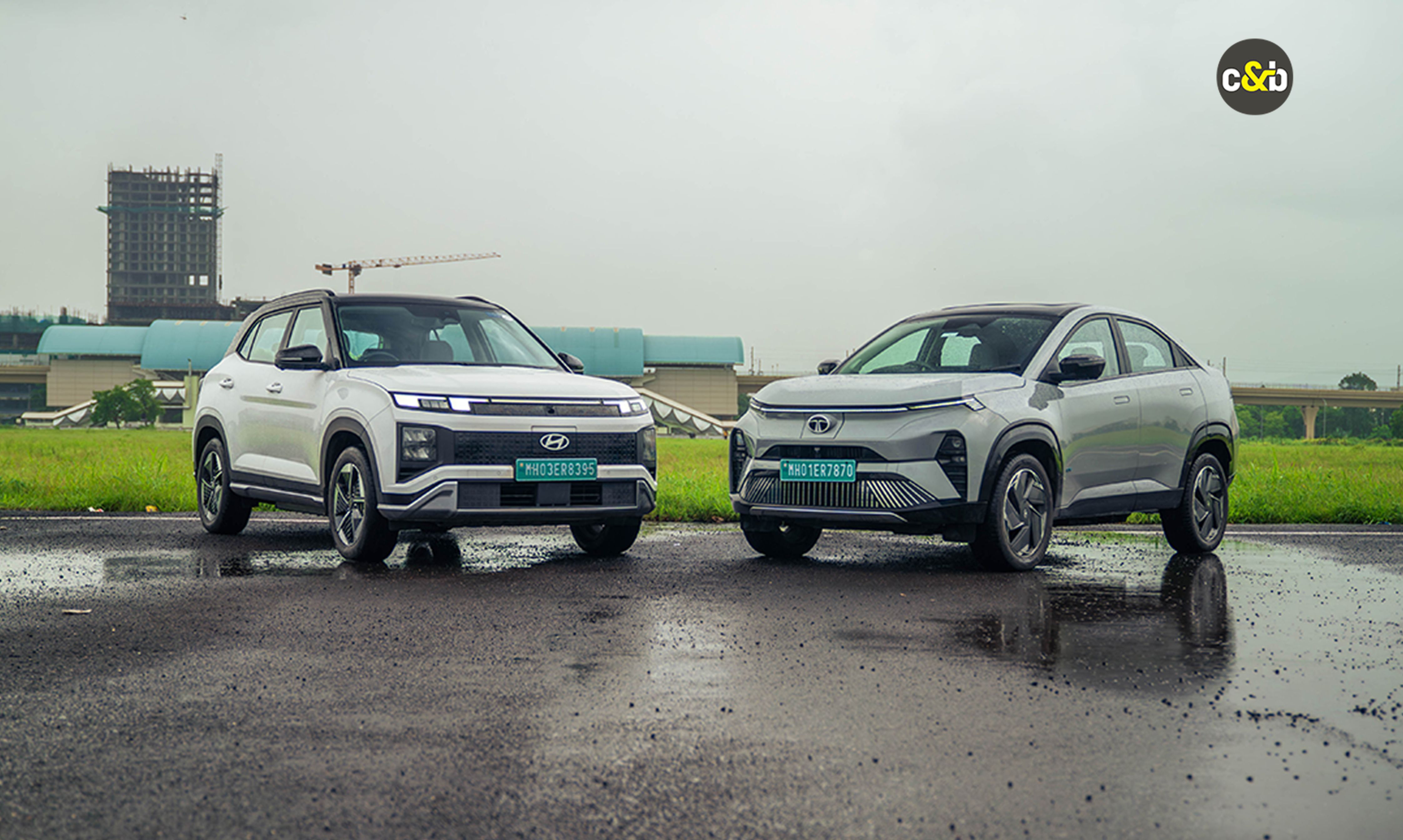
But the Creta Electric isn’t without a direct rival. It faces competition from homegrown rival, Tata Motors’ Curvv SUV-Coupe. The Curvv marked Tata’s entry into the highly competitive compact SUV segment, with the SUV going on sale in internal combustion and all-electric forms in 2024. Additionally, with prices for both electric SUVs overlapping notably, the question that comes up is, which is the one to buy?
Also read: Hyundai Creta Electric Updated With New Variants; Offers Increased Range and More Features
Hyundai Creta Electric vs Tata Curvv EV: Design
Hyundai gave the second-gen Creta a substantial overhaul in terms of design with last year’s facelift going for a more boxy and upright design and doing away with the quirkier design elements that debuted on the second-gen SUV in 2020. The Creta Electric, for its part, carries over the same basic design formula but adapted for an all-electric SUV. The ICE SUV’s grille has been enclosed, there’s a new light bar between the LED daytime running lamps, the charging flap sits in the nose, and the bumper design too has been changed with new active vents.
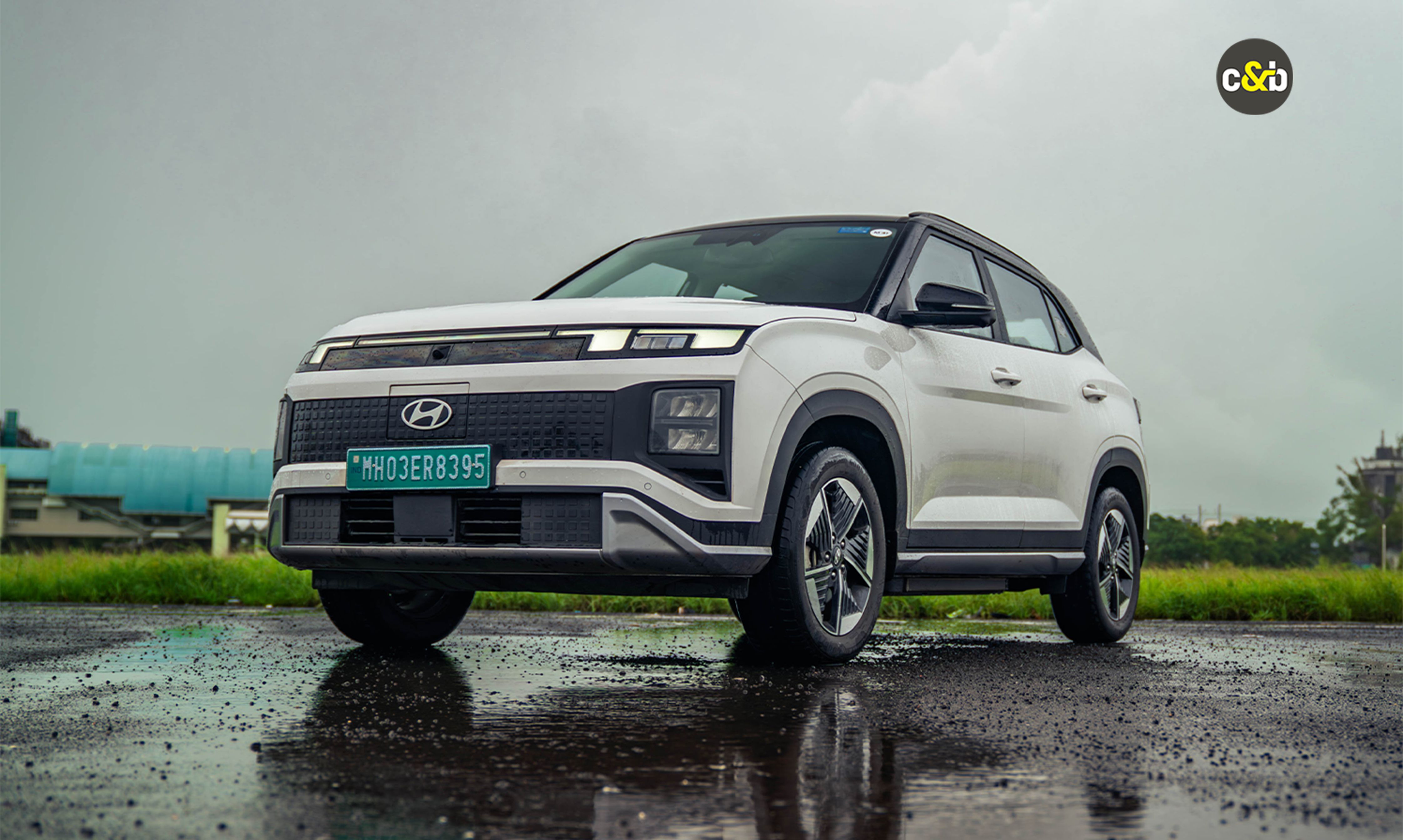
The Creta Electric gets minor cosmetic updates over its ICE counterpart, but is still a good-looking SUV
In profile, the changes are down to just the EV-specific wheel designs, while around the back its just the bumper that has been tweaked. Hyundai has also incorporated the pixel design elements from its Ioniq series into the Creta, both in the enclosed grille and on the rear bumper. All in all, the Creta does come across as quite a handsome and well-proportioned SUV.
Also read: All-New Hyundai Creta Electric Review: Can The EV Replicate The Success?
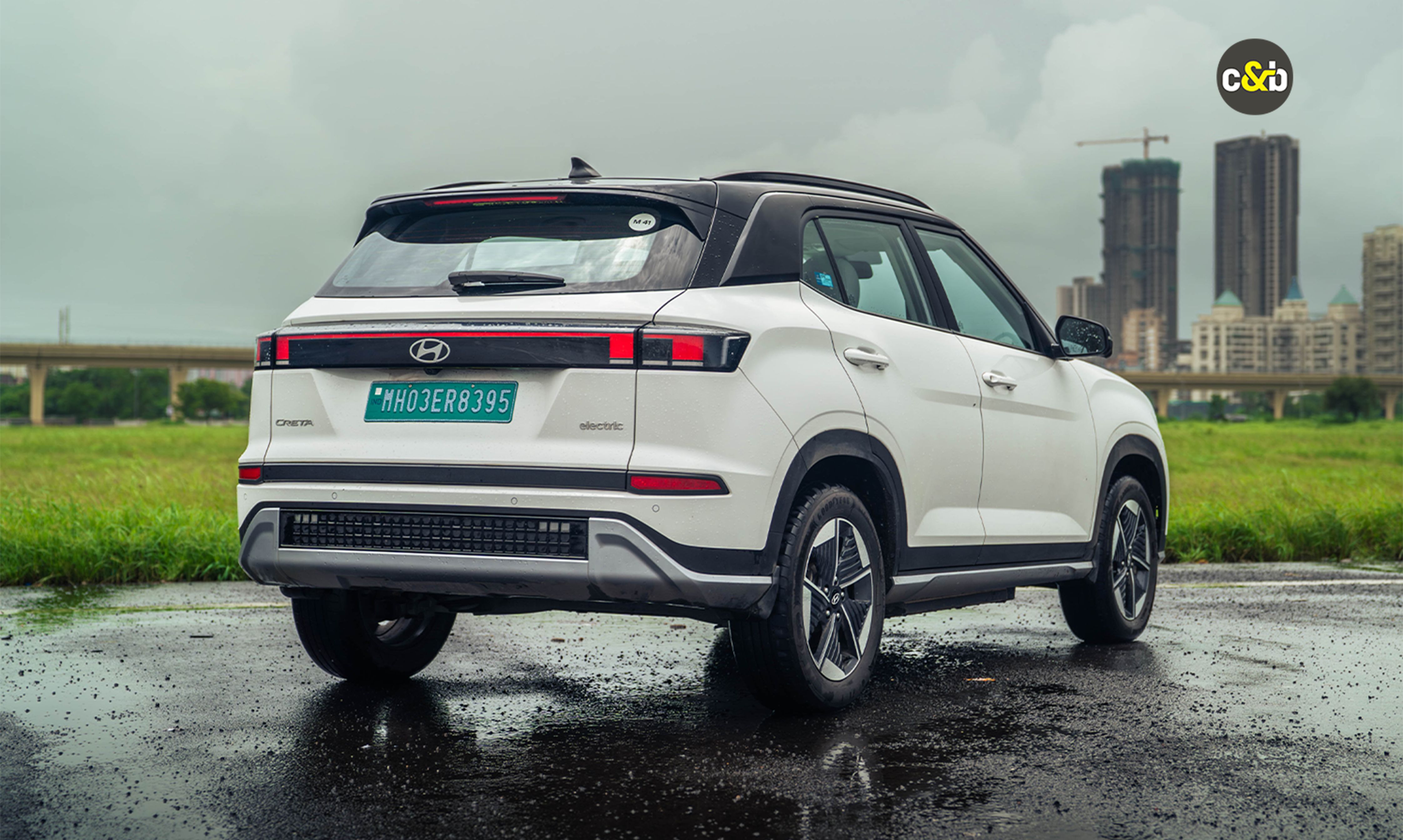
Creta Electric's under-the-radar looks will suit buyers who do not want to stick out in a crowd.
Moving to the Curvv, Tata went for that SUV-Coupe look with the receding roofline and shallow rear deck. The Curvv is quite striking to look at with its curvier design, though if anything, it feels a bit lost considering that almost the entirety of Tata’s range of SUVs share the same basic fascia design. It was the Curvv concept that first introduced us to this new design, though Tata proceeded to introduce it in the facelifted Nexon, Harrier and Safari as well as preview its next-gen designs with the Avinya concept before the production Curvv hit the market. The Creta Electric, in this regard, can be forgiven as it's not technically an all-new car, but a derivative of the internal combustion SUV that launched last year.
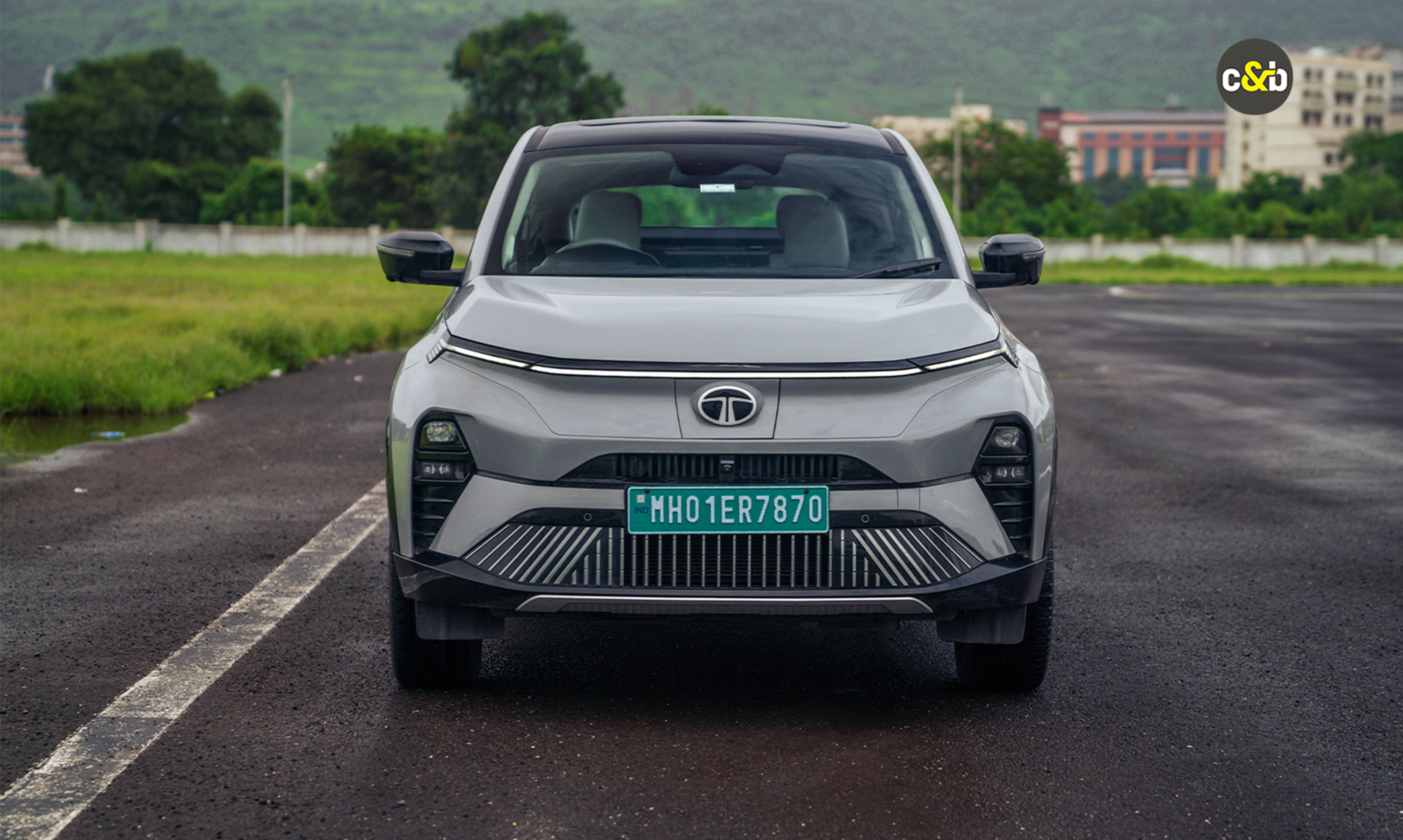
The Curvv EV is certainly striking to look at, but the design now feels watered down after seeing it on the Nexon, Harrier and Safari.
From the front, the Curvv does look wide and squat - giving it a sportier look, though there is no getting around the fact that it looks a lot like the Nexon. The sharply raked rear windscreen, while adding to the coupe-like visuals, hampers rear visibility, though the full-width lightbar with integrated stop lamps and turn indicators does look smart. Fit and finish, however, does continue to remain an issue with the Curvv, and eagle-eyed buyers are likely to spot a minor panel gap or loose trimming - not something you would want in an Rs 20 lakh-plus SUV.
Also read: Tata Curvv EV Review: 3 Reasons To Buy And 3 Reasons To Avoid
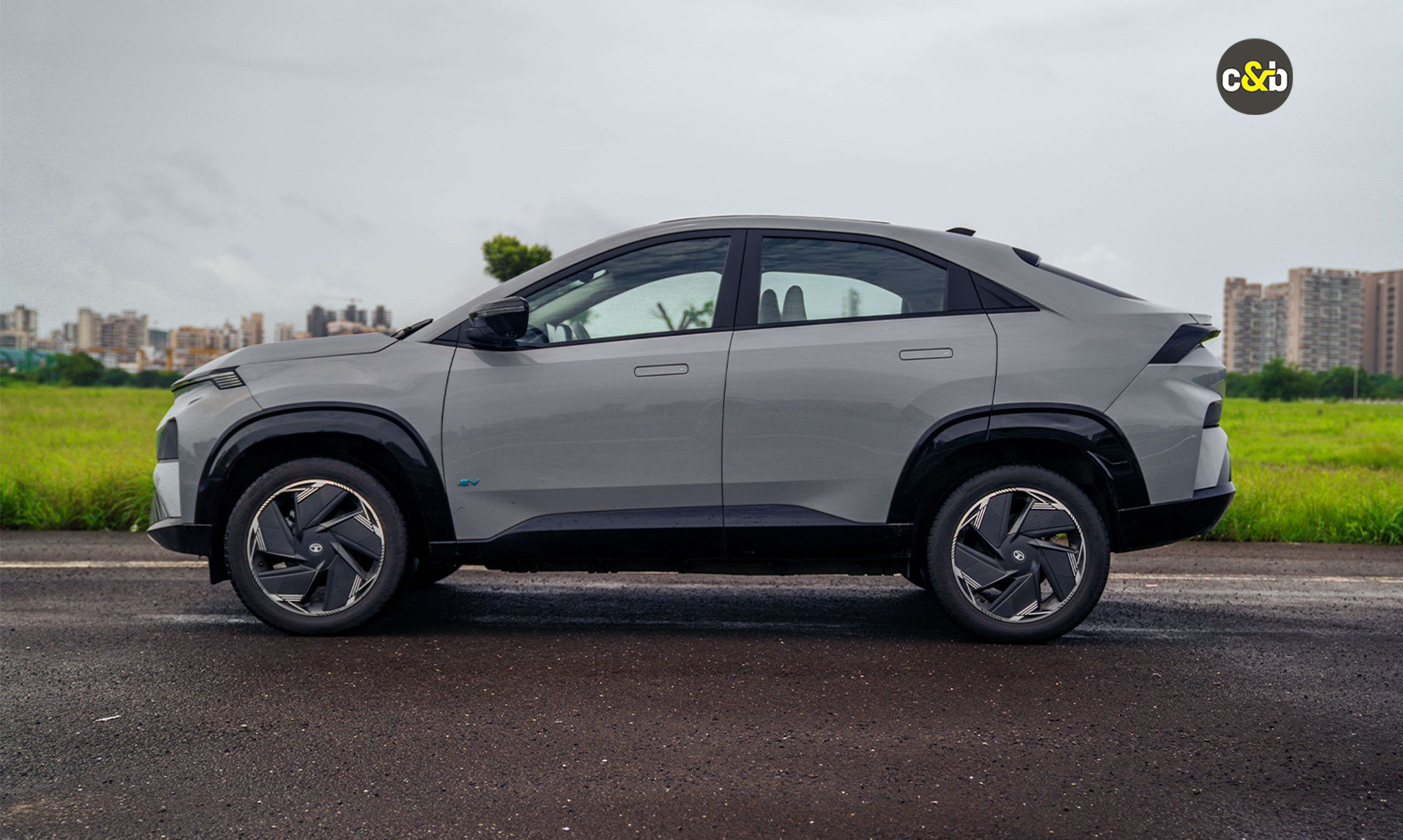
The coupe profile, high-set tail and sleek tail lamps add dramatic flair to the Curvv.
The Creta, in comparison, is quite well put together with no real quality niggles to be found on the exterior or in the cabin.
Hyundai Creta Electric vs Tata Curvv EV: Cabin Design, Space & Comfort
Moving to the cabin, the Curvv again feels a bit of a letdown. Barring probably a few trim adjustments, the cabin in the fully-loaded model is identical to the Nexon EV - from the digital instrument cluster to the 12.3-inch touchscreen, touch-sensitive controls on the centre console, shift-by-wire gear selector, wireless charging pad and centre armrest. Even the seats seem like a direct lift from the smaller Nexon. The steering, meanwhile, looks to be lifted from the larger Harrier with its four-spoke design. All in all, the feeling of sitting in the cabin does feel a bit underwhelming, especially if you already own or have driven the current Nexon.
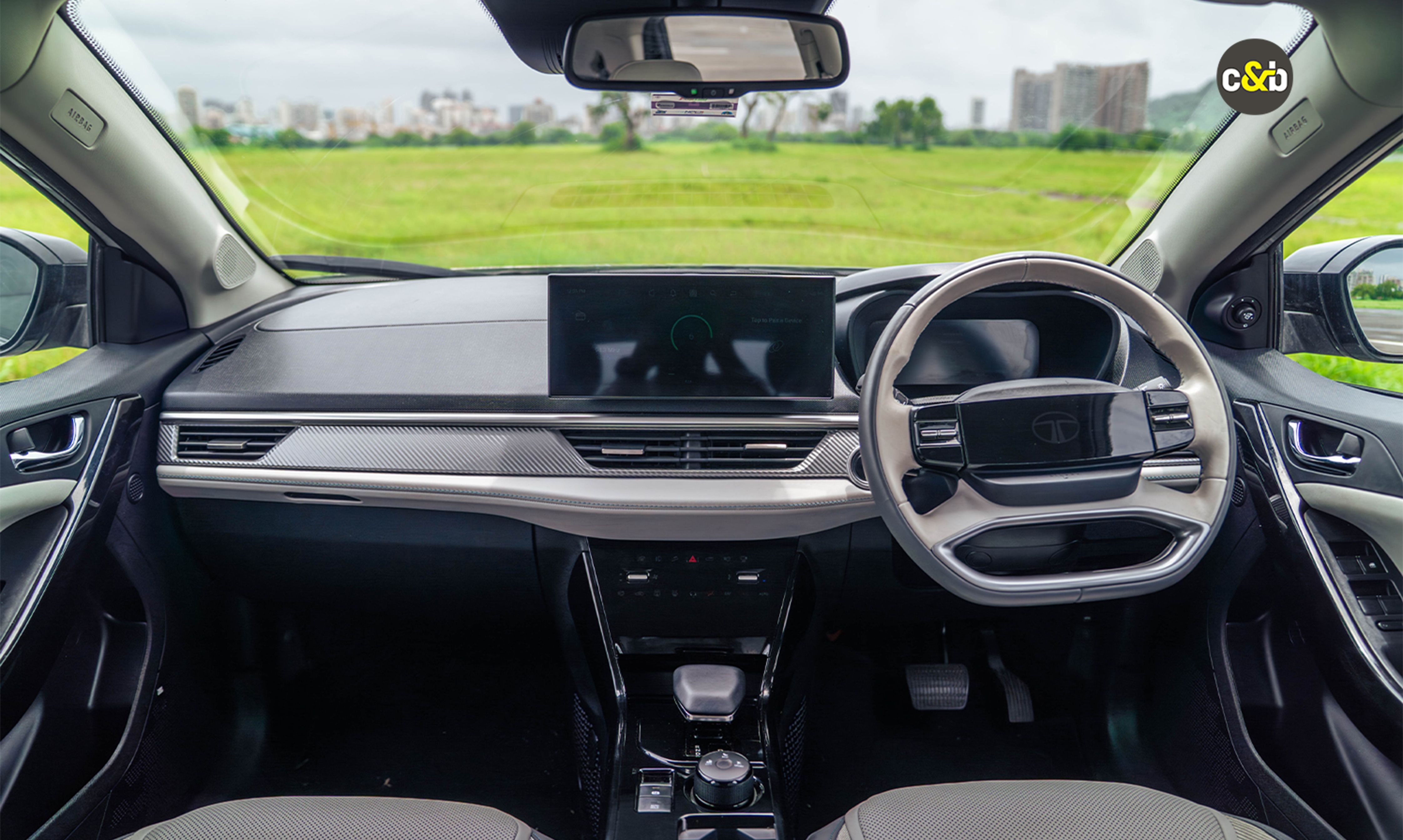
Curvv EV's cabin is decidedly Nexon-like in design and layout, and might not appeal to buyers upgrading from the subcompact segment.
The Creta Electric, meanwhile, gets the same cabin layout as its ICE counterpart, save for the redesigned central floor console. The Creta gets a floating floor console design with the gear selector shifted to a second stalk on the steering column, freeing up space for additional storage and cup holders. The layout is quite smart to say the least, with the twin 10.25-inch screens atop the dashboard and the neatly integrated air-con controls with their touch-sensitive controls.
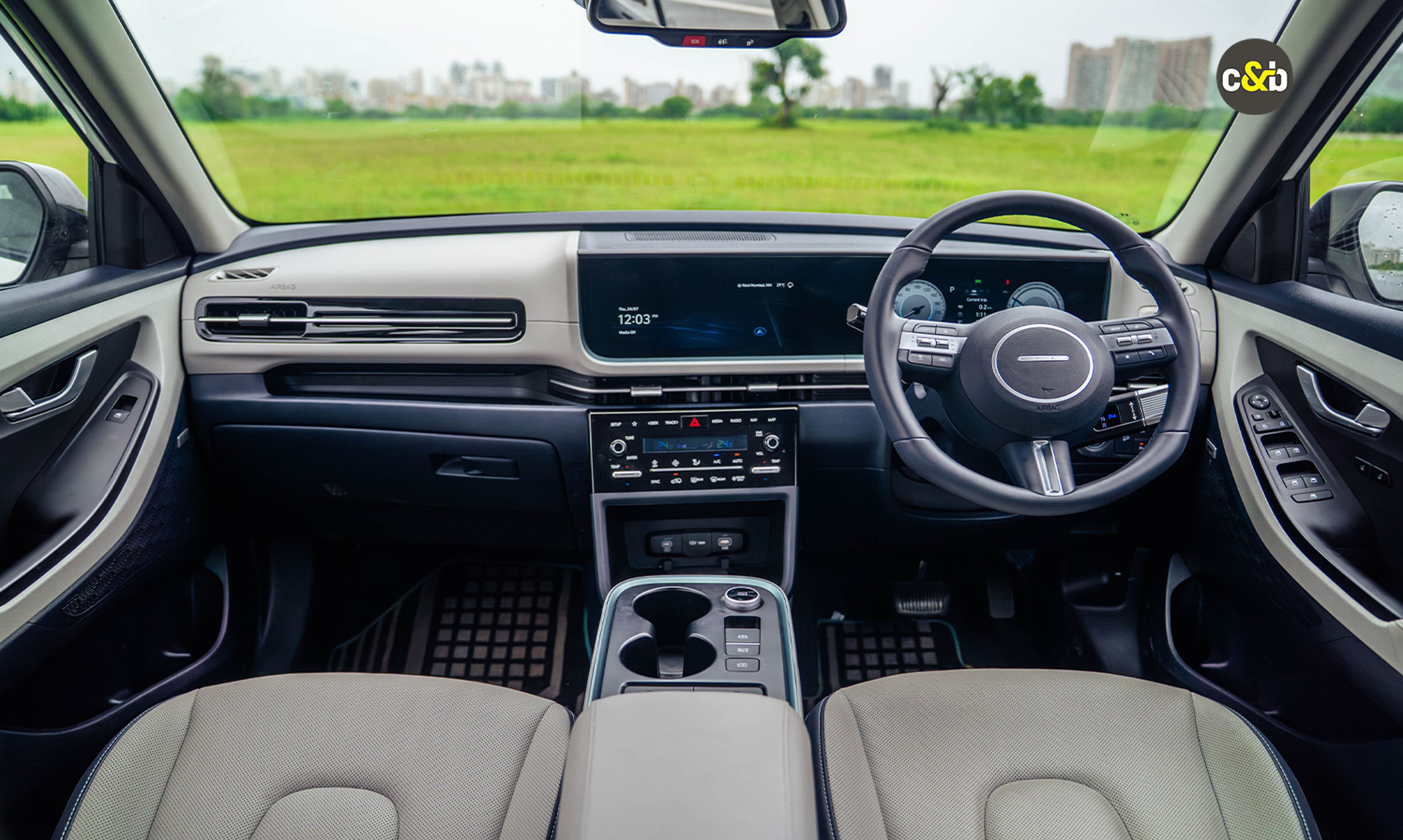
Creta Electric gets new centre console, new steering wheel and column-mounted gear selector.
Moving to seating comfort, the Creta offers better seats both at the front and rear. The front seats are well cushioned and shaped well, and even extended periods of being seated are not uncomfortable. Additionally, both front seats are power adjustable, and the co-driver seat even gets ‘boss mode’ controls on the side for the rear passenger to use to make more space in the back.
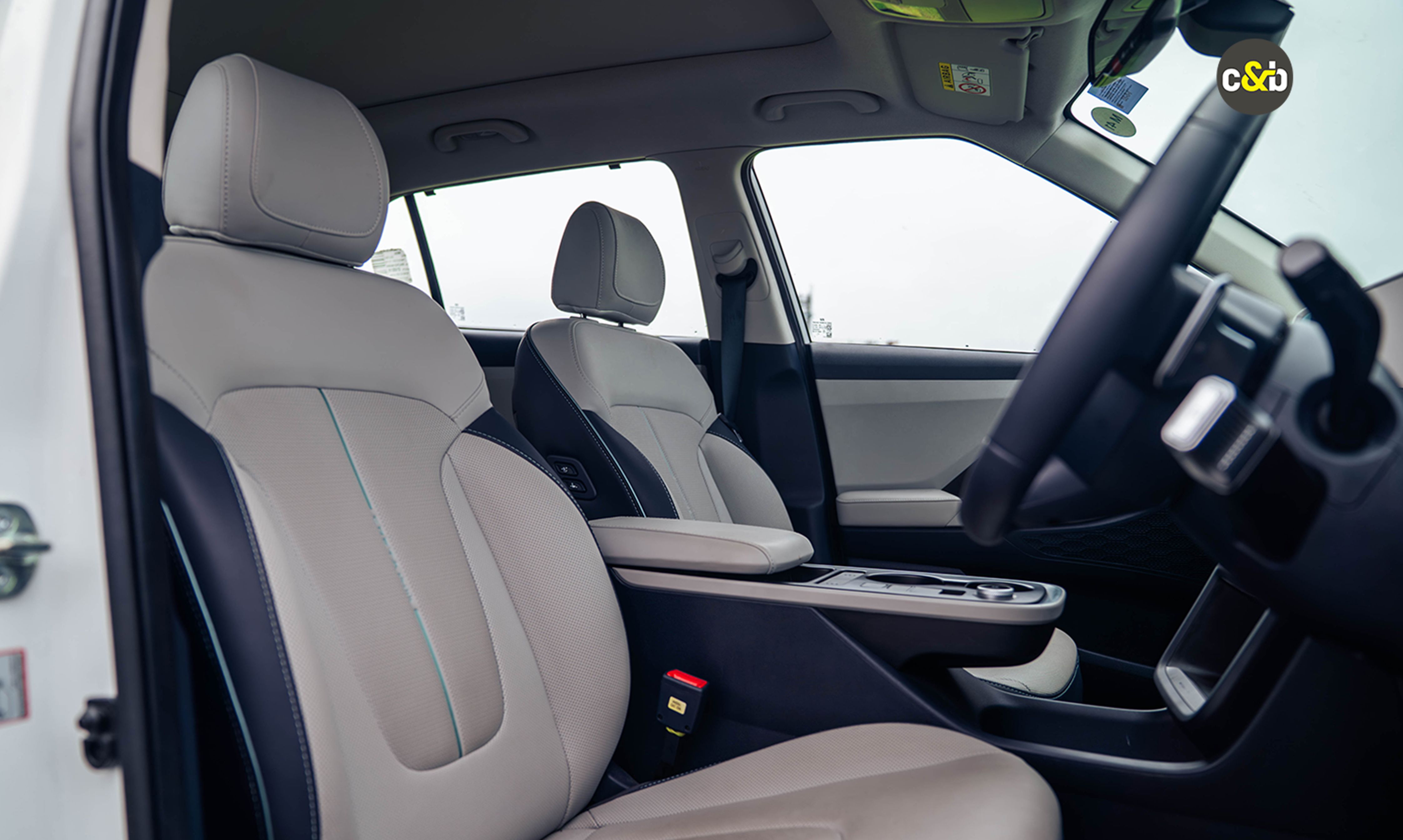
Creta's front seats are power adjustable, ventilated and offer good support all around; you, however, do feel like you're sitting a little too high.
That said, the Creta is not without its ergonomic issues. The steering, even in its highest setting, can feel a little low-set, while the driver seat, in its lowest setting, feels quite high. Additionally, the gear selector position is a bit awkward, and you could accidentally bump the stalk climbing in or out - that said, the gear selector is a rotary switch, so there is little chance of accidentally putting the car in gear.
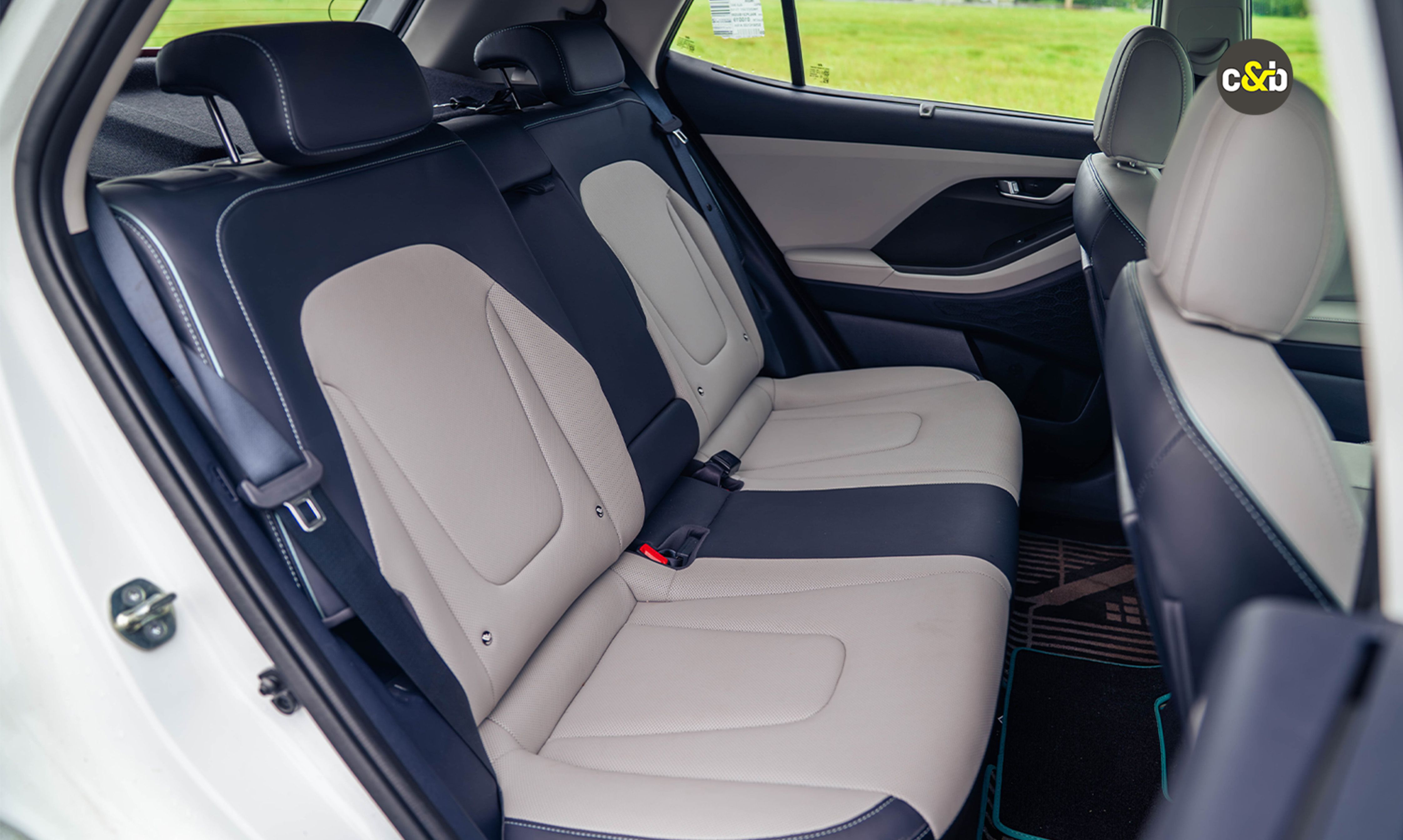
Creta Electric's rear seat is the more comfortable of the two, with better seating posture and more headroom.
Moving to the Curvv EV, the front seats have a shallow backrest, which can feel a bit uncomfortable for large individuals. The backrest ends close to the shoulder blades with the scooped-out design likely to put additional pressure on the user’s lower back. Space up front is decent as well, though the foot well is tighter than in the Creta. Also, the shift-by-wire gear selector on the centre console feels a bit more intuitive to use than the Creta’s, though it's not without its flaws - sometimes you need to move it multiple times to change between Drive and Reverse. The Curvv’s charging pad is also quite small, so a larger phone might not fit if you are using a phone case. Additionally, the USB connector and charging socket are fiddly to access.
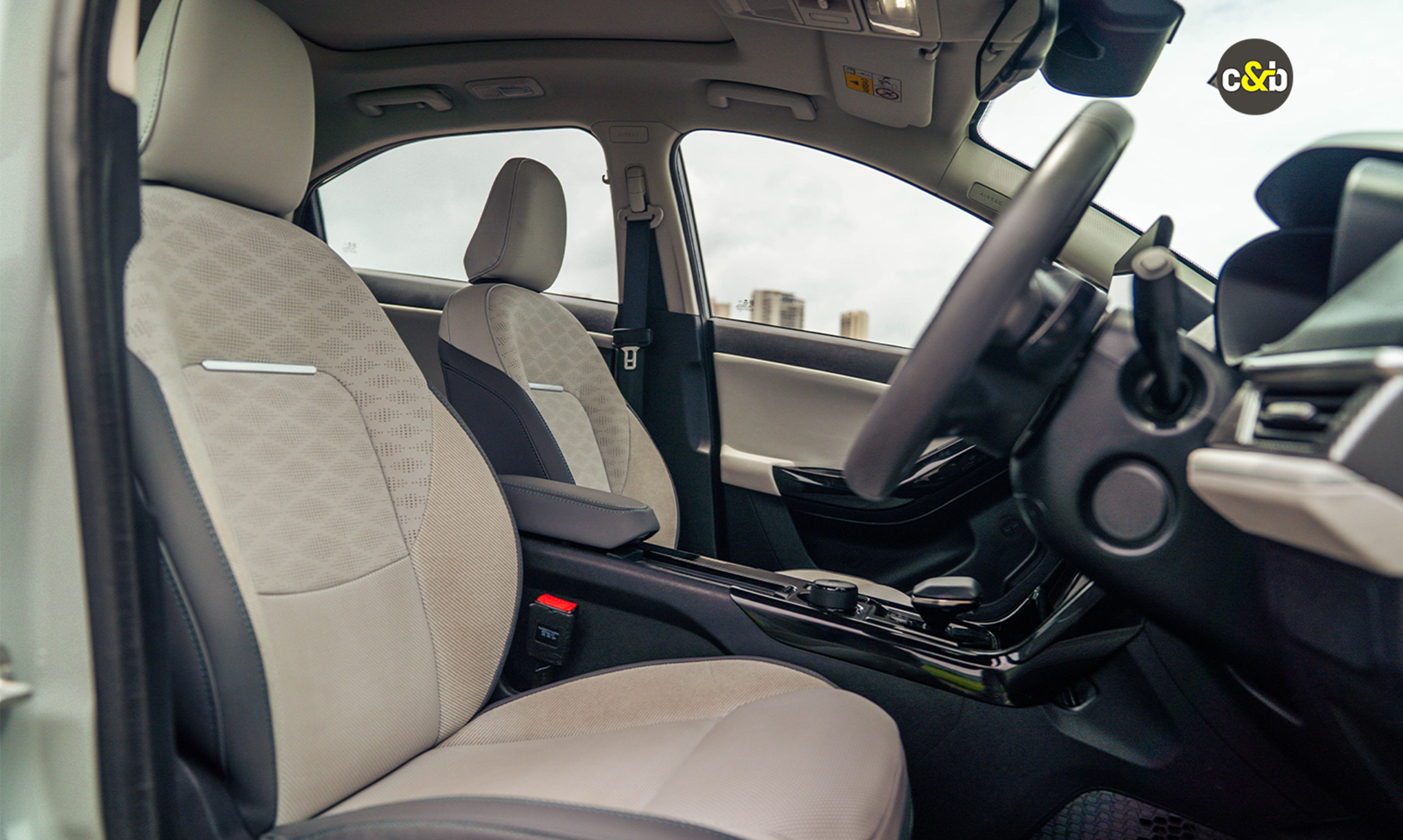
Curvv EV's front seats are well-padded, but the backrest shape can put extra pressure on the lower back.
Moving to the rear seat, it's here also that the Creta outshines the Curvv. The latter’s coupe roofline intrudes into headroom, and you are also seated quite knees up. Additionally, with a tall individual sitting up front, legroom too can be tight. The Creta, in comparison, feels airier thanks to its more upright proportions and its longer wheelbase - 2610 mm to the Curvv’s 2560 mm means there is more leg room as well. Additionally, you are not seated with knees up, so even longer journeys are a non-issue.
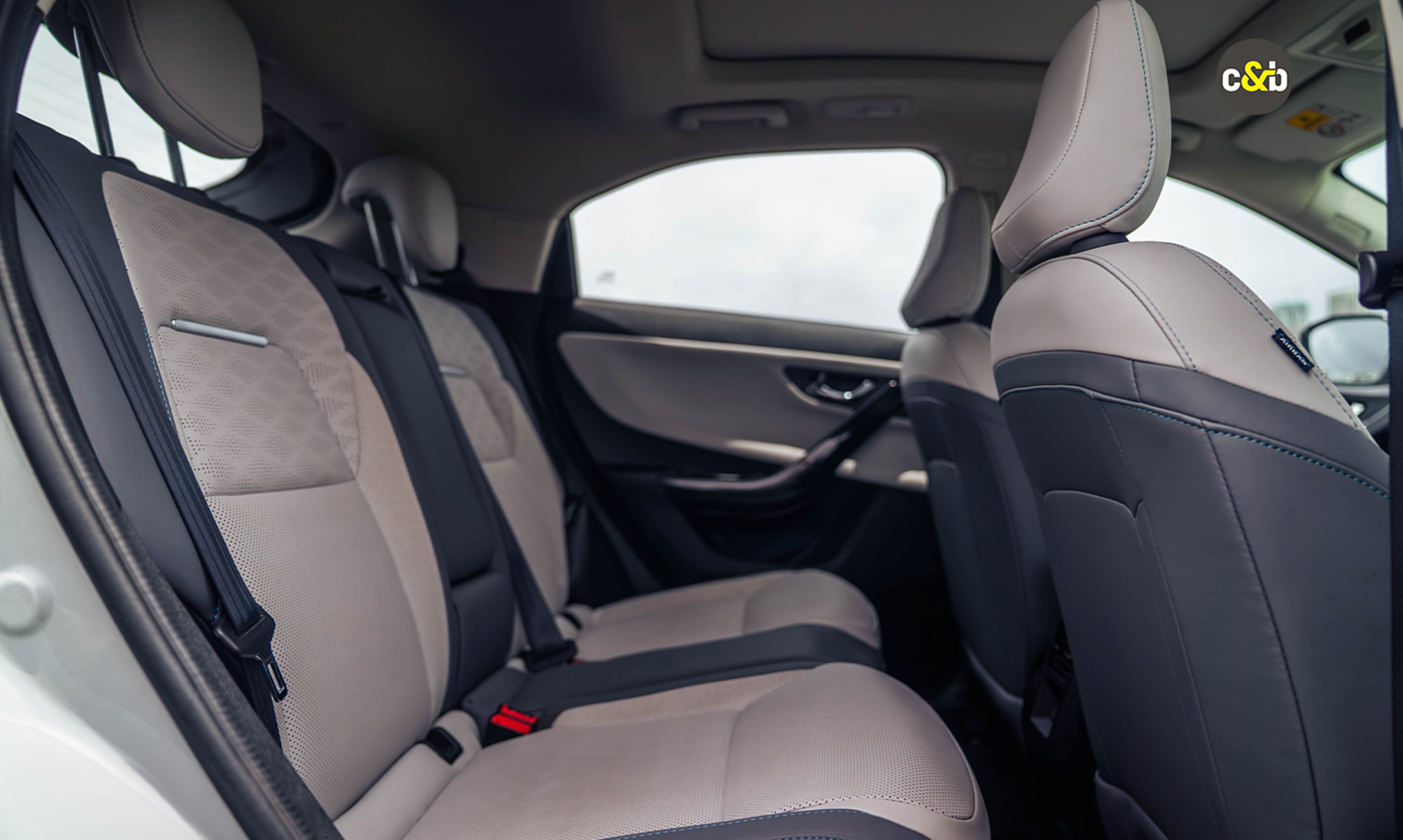
Despite its size, the Curvv's second row is tight on space; headroom is about adequate for anyone under 6 feet, though you are seated very knees up due to the underfloor battery.
Hyundai Creta Electric vs Tata Curvv EV: Features
In these fully loaded spec, the Curvv EV and Creta Electric are quite similarly specced with both running all-LED lights, auto headlamps and wipers, 10.25-inch digital instrument displays, powered driver seats, ventilated front seats, wireless phone charging, air purifier, disc brakes all around, a panoramic sunroof, ADAS safety tech, six airbags, Vehicle-to-load functionality and more.
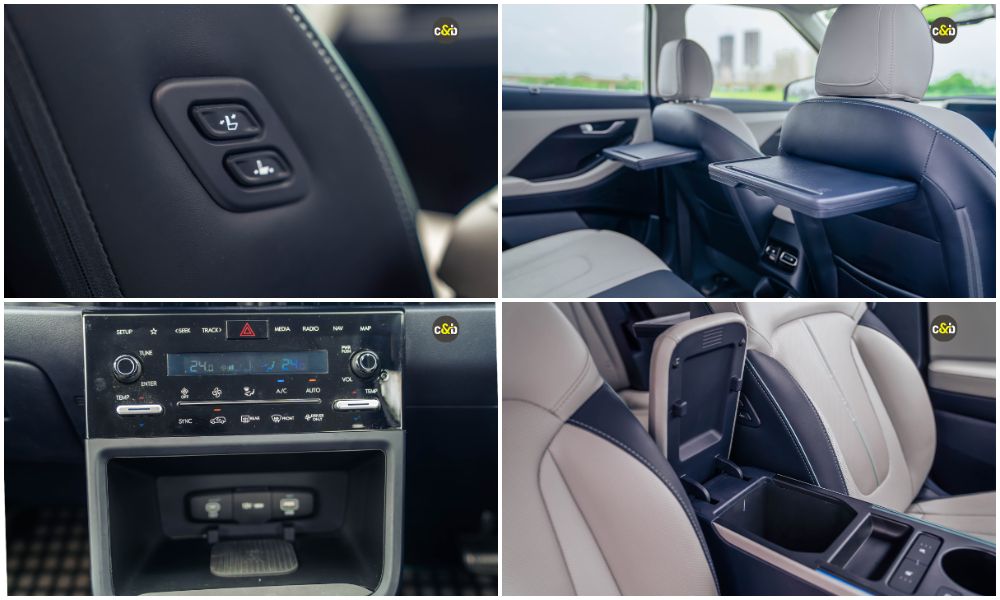
Creta edges ahead in the feature game with a powered co-driver seat, boss mode, rear tray tables, dual-zone climate control and more usable storage spaces across the cabin.
The Curvv edges ahead in the infotainment department with a larger 12.3-inch touchscreen with wireless smartphone integration to the Creta’s 10.25-inch unit that only supports wired Android Auto and Apple CarPlay - addressed in a September update with the provision of a wireless adaptor. The Curvv also nudged ahead with offering a powered tailgate with gesture control, vehicle-to-vehicle charging capabilities and supporting 70 kW DC fast charging to the Creta’s 50 kW.
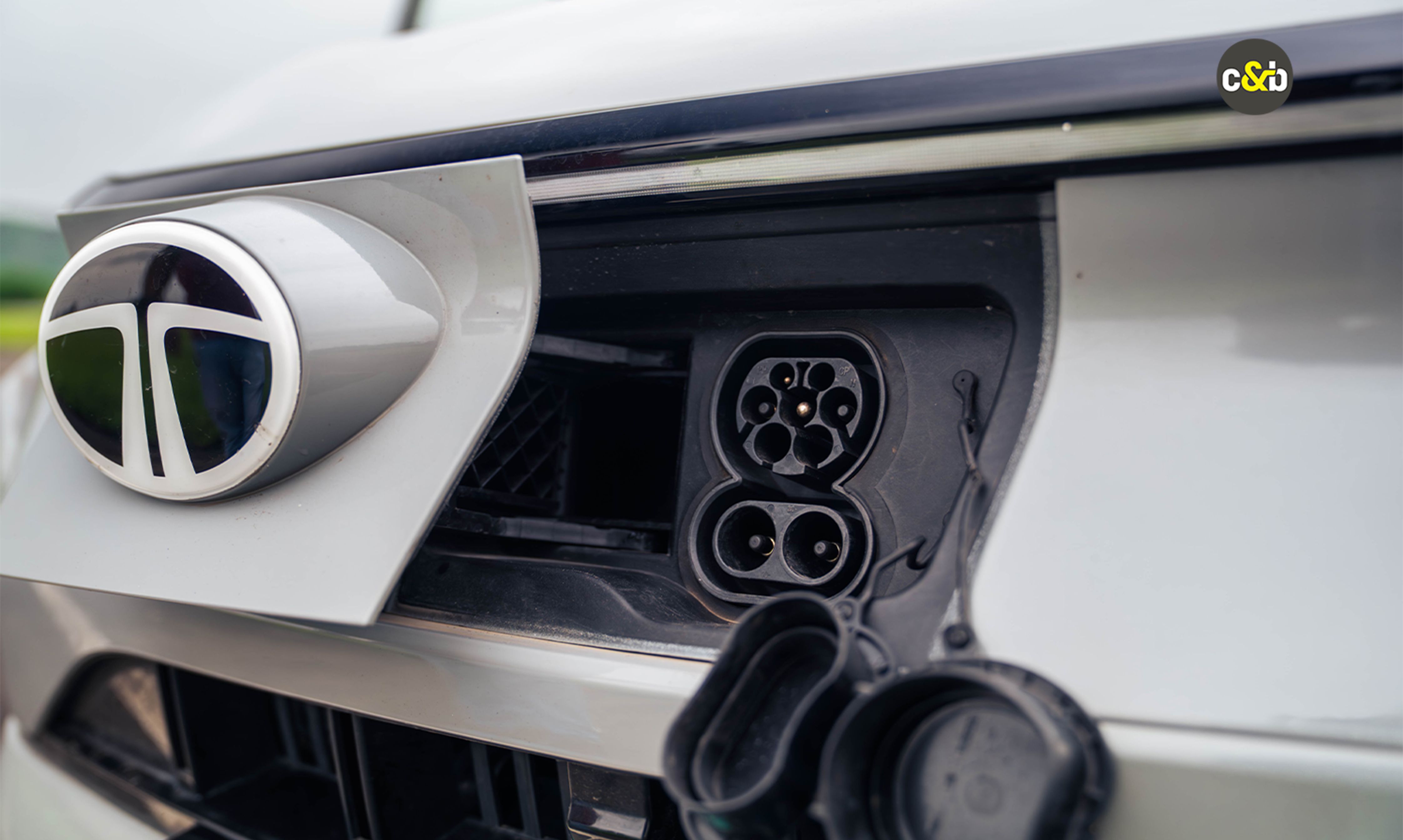
The Curvv, however, takes the edge in terms of charging support up to 70 kW DC fast charging compared to the Creta's 50 kW.
The Creta, however, edges ahead in the comfort features department, offering seatback tables to rear passengers, a powered co-driver seat with boss mode capabilities, memory function for the driver seat, a welcome function that pushes the driver seat back for easier ingress and egress, sunshades in the rear doors, dual-zone climate control to the Curvv’s single zone and a three-pin power outlet under the rear seat to plug in a laptop to charge to get work done.
Hyundai Creta Electric vs Tata Curvv EV: Dynamics
Tata, in recent years, has offered some of the best driving dynamics in the mass market segments, offering a strong blend of well-sorted ride and handling. The same holds true for the Curvv EV as well. While the suspension set-up is on the softer side, the SUV handles a lot of road imperfections with ease, rounding out the bumps and undulations for a more comfortable ride. The softer ride quality, however, also means that the rear end is susceptible to bouncing if you hit a sharp bump at high speeds, though the car in no way feels unsettled.
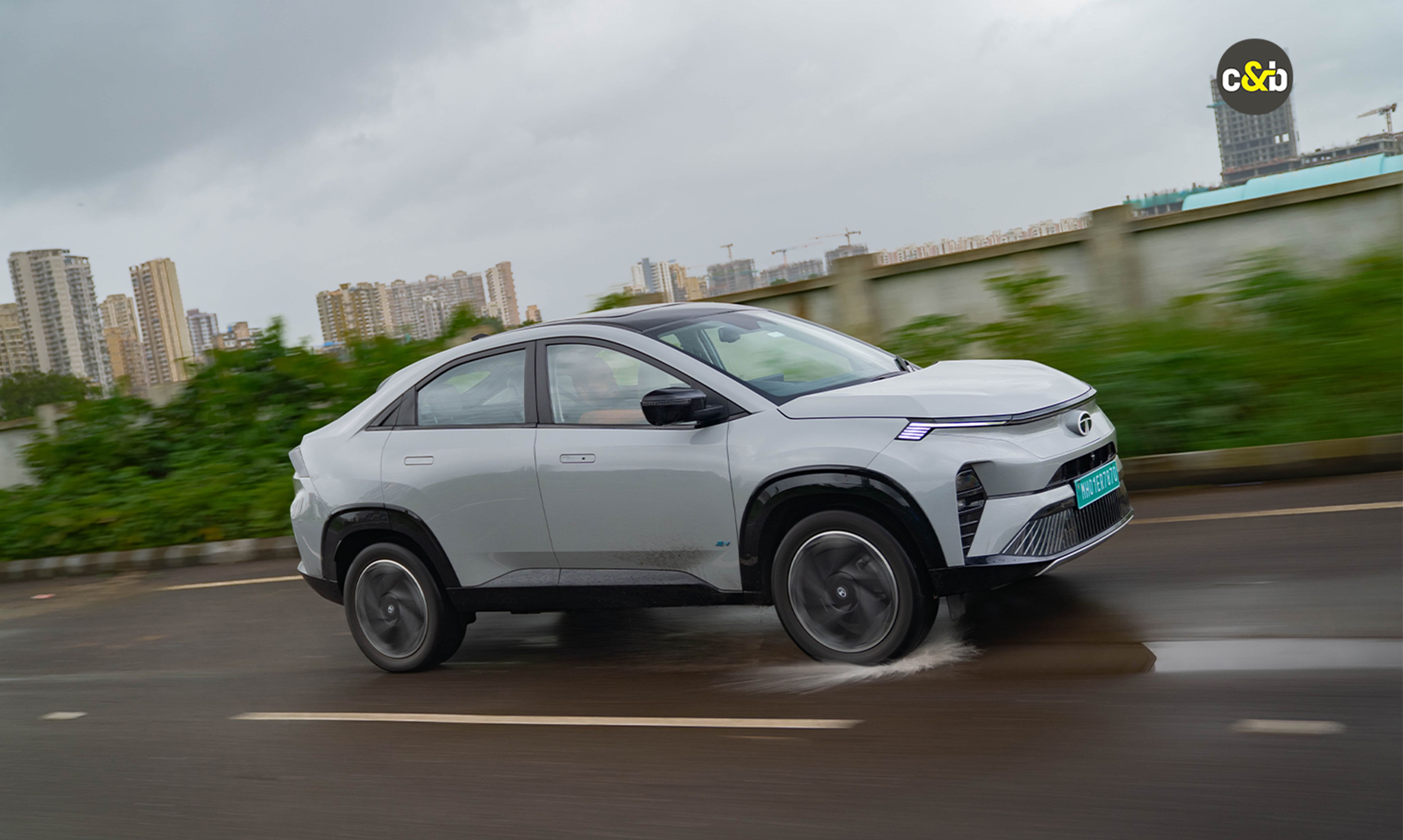
In terms of ride and handling, the Curvv is the better car here; softer suspension means potholes are ironed out very well; The battery mass under the floor also aids in high-speed stability.
The softer suspension also means that the Curvv has its fair share of body roll as well, though it still feels nice and planted through the corners even at the speed limit. The steering isn’t the most feel-some unit out there and feels very light in the hand in the dead-ahead position, but it offers enough feel to place the car properly between the lines.
The Creta, on the other hand, features a stiffer set-up all round, which does make the ride quality busier, especially on Mumbai’s uneven roads. Bump absorption is good at low speeds, though as the speeds start to climb, you do feel a little more of the impact of potholes within the cabin, though the car still stays nice and planted even at triple-digit speeds. The steering, here too, is not the most communicative but offers enough feedback to drive with confidence at high speeds.
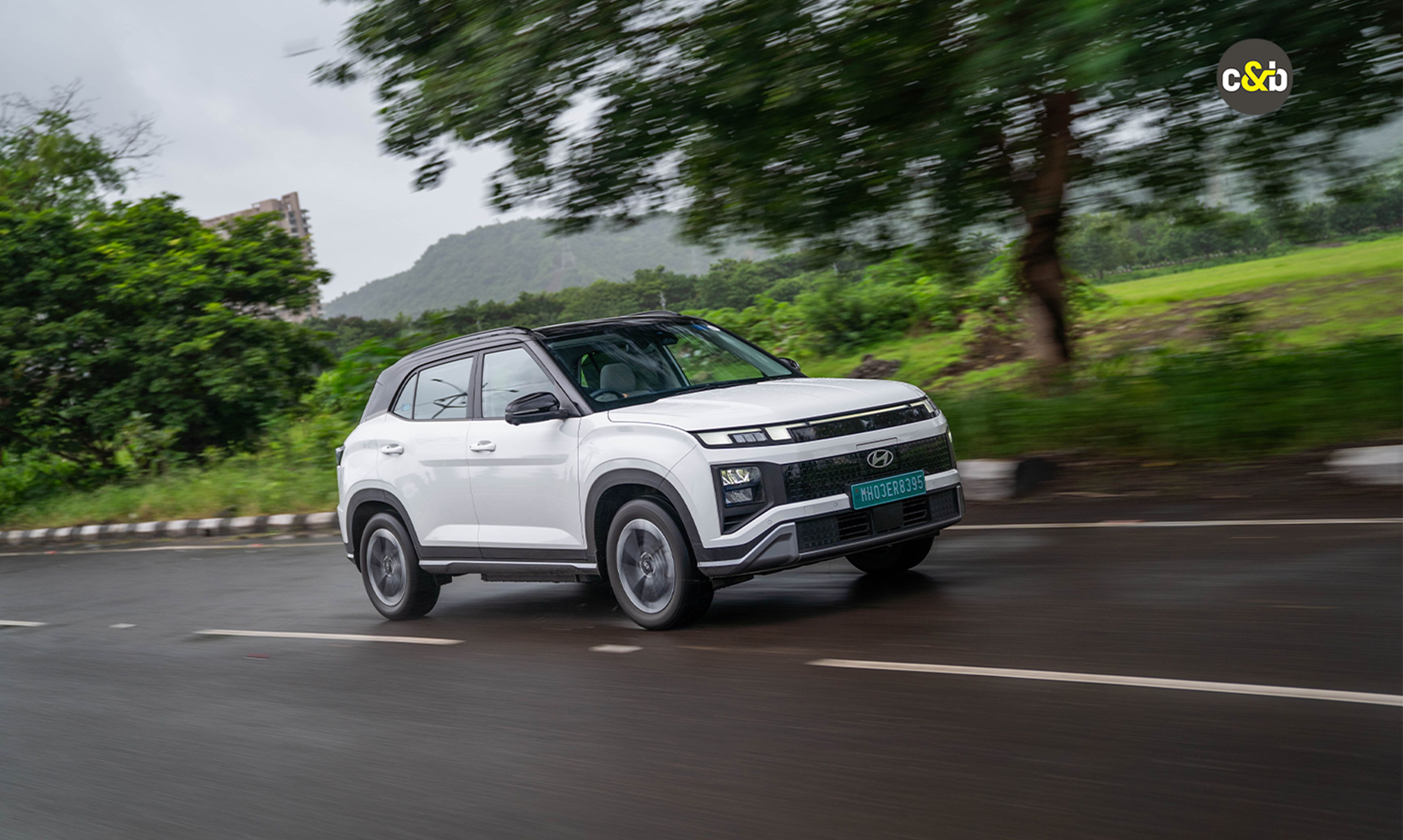
Creta's ride is firmer in comparison, but in no way a deal breaker; high-speed manners are well sorted here too.
Another interesting aspect to note is that the Curvv feels wider than it actually is from within the cabin, with the low dashboard and large windshield aiding in that illusion. The Creta’s boxier design has meant that the bonnet line is always in the driver’s field of view so placing the SUV in narrow gaps is easier.
Hyundai Creta Electric vs Tata Curvv EV: Powertrain & Range
Both the Curvv EV and Creta Electric are offered with two powertrain options. Lower variants get a less powerful electric motor and smaller battery packs, while the top spec variants develop more power and offer greater usable range.
| Tata Curvv EV 45 | Tata Curvv EV 55 | Hyundai Creta Electric | Hyundai Creta Electric LR | |
| Battery | 45 kWh | 55 kWh | 42 kWh | 51.4 kWh |
| Power | 110 kW | 123 kW | 99 kW | 126 kW |
| Peak Torque | 215 Nm | 215 Nm | 255 Nm | 255 Nm |
| Claimed Range | 430 km | 502 km | 390 km (420 km*) | 473 km (510 km*) |
| Tested Range | — | 395 km | — | 390 km |
*Claimed range improved with a model update in September 2025; model tested prior to update
Before we start, we tested both the Curvv and Creta back in August 2025, with Hyundai subsequently updating its SUV in the subsequent month. The updates saw the range of the Creta Electric LR improve from 473 km to 510 km, though we have not tested the car post the update.
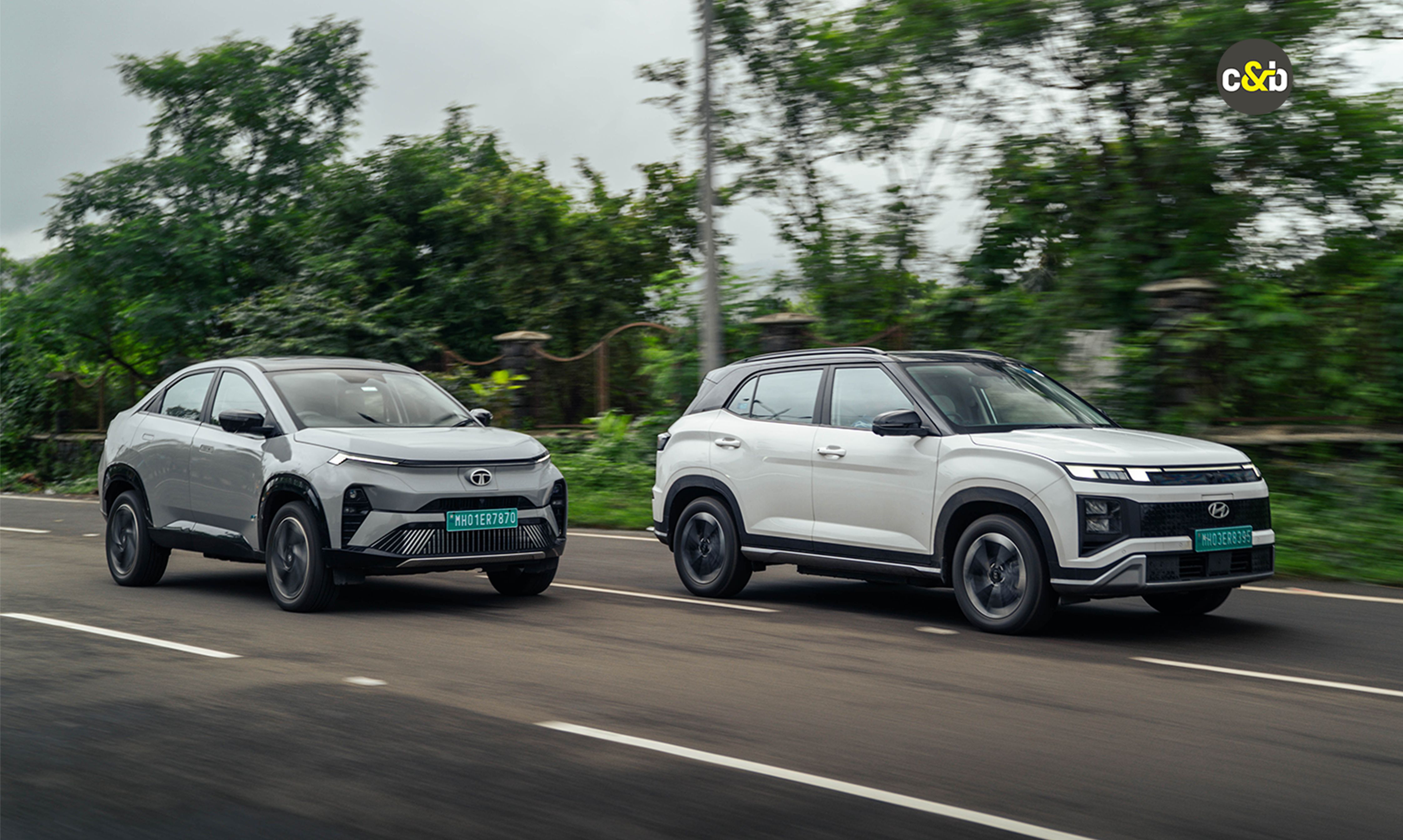
The Creta feels a little bit smoother in its power delivery, and battery management also feels more ‘on point.’
The Creta offers the smaller battery pack of the two electric SUVs, though Hyundai’s battery management system looks to be on point. Our testing of the two SUVs showed that despite a near 4 kWh difference in size, both SUVs offered nearly identical usable range. Additionally, driving both SUVs on the same route in the commute to and from the office also showed that the Creta used about 1 to 2 per cent less charge than the Curvv along a 30 km route.
In terms of everyday drivability, the Creta feels the more progressive of the two, with the power coming on just that little bit smoother. The Curvv, on the other hand, needs a bit more careful pedal modulation, and the instrument cluster does show a notable spike in power to the electric motor when pushing off from a dead stop, even without pressing the accelerator. As with most EVs, both offer almost the entire bulk of their power from the start, and there are drive modes as well to adjust the levels of performance. Driving at city speeds in both SUVs is a breeze, and even pulling off overtakes at higher speeds is a non-issue given that there’s ample power in reserve.
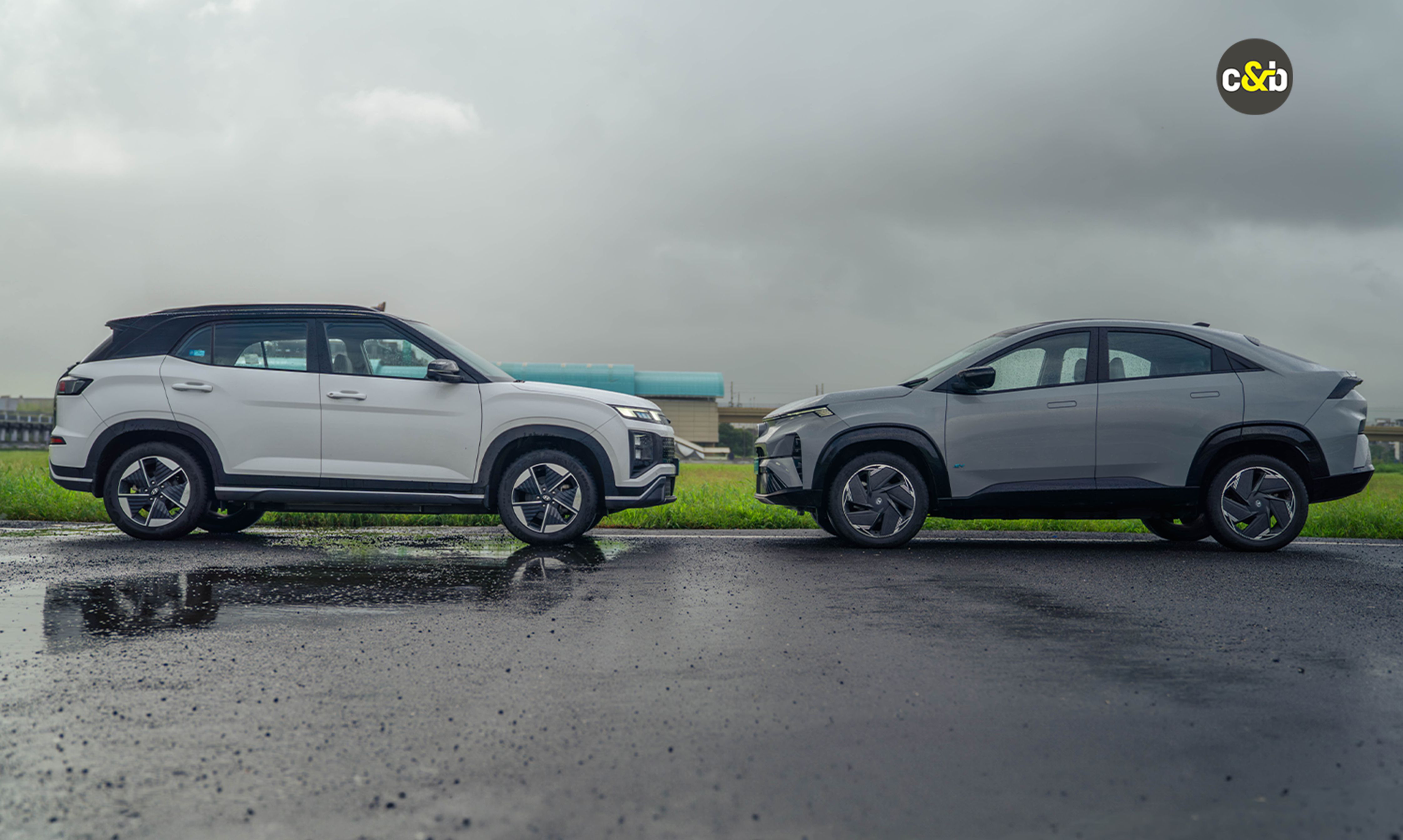
The Curvv has the larger battery at 55 kWh, though in our tests, both SUVs showed similar real-world range.
If you do plan to launch the car off the line, it's the Creta that is the quicker of the two SUVs, with a claimed 0-100 kmph sprint time of just 7.9 seconds to the Curvv’s 8.6 seconds.
Hyundai Creta Electric vs Tata Curvv EV: Charging
As for charging, both the Curvv EV and Creta Electric support CCS Type 2 AC and DC Fast charging, though the charging rates differ. The Creta Electric supports up to 11 kW of AC fast charging to the Curvv EV’s 7.2 kW peak capacity, though the Curvv supports a higher 70 kW DC charging standard (60 kW for the Curvv EV 45) to the Creta’s 50 kW. So what does that mean for the charge times? Well, here’s the full break-up:
| Hyundai Creta Electric | Tata Curvv EV | |
| AC Charging Time (10-100%) | 4 hours to 4 hours 50 min (11 kW AC) | 6 hours 30 mins to 8 hours (7.2 kW) |
| DC Charging Time (10-80%) | 58 mins (50 kW) | 40 mins (55kWh @ 70 kW, 45 kWh @ 60 kW) |
Both SUVs also come with a 15-amp charger included in the package as standard, though buyers will need to shell out extra for the installation of a wallbox charger.
Hyundai Creta Electric vs Tata Curvv EV: Which Is The One To Buy?
| Tata Curvv EV | Hyundai Creta Electric | |
| Price (ex-showroom) | Rs 17.49 - 22.24 Lakh | Rs 18.02 - 24.70 Lakh |
The Curvv EV holds a clear advantage when it comes to cost, being priced below the Creta across the board. The price advantage becomes even more noticeable the higher up the variant list. For the two cars seen here, the fully-loaded Curvv EV is priced at Rs 21.99 lakh while the Creta EV sits at Rs 24.40 lakh (ex-showroom, including an 11 kW AC wallbox charger) - a price gap of over Rs 2 lakh. Deleting the charger drops the Creta's price to Rs 23.67 lakh (ex-showroom). Special editions such as the Creta Electric Knight Edition and Curvv Dark Editions come at an additional cost over the standard top-spec models.
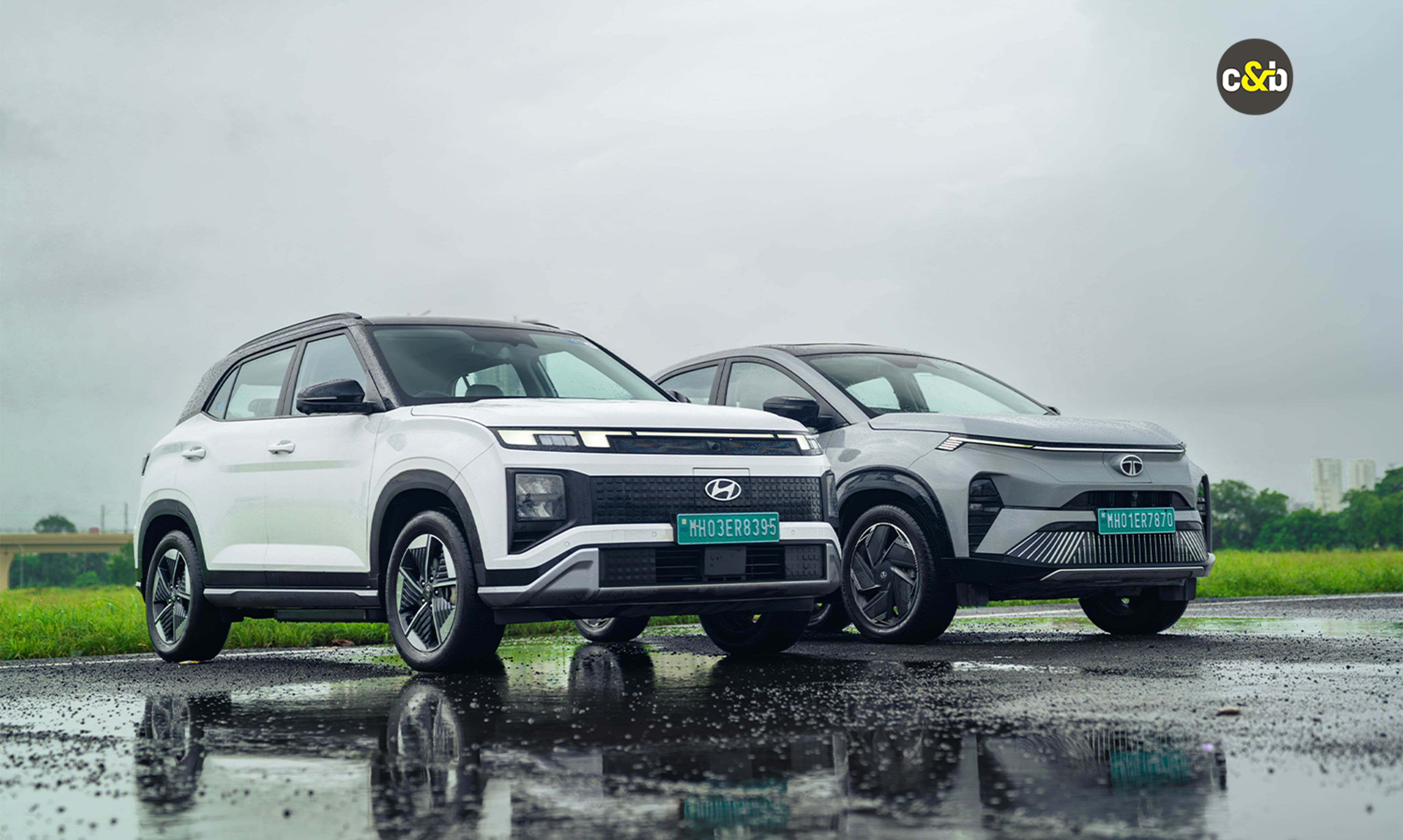
The Creta EV comes across as the more well rounded package of the two EVs though the Curvv has a notable ricing advantage particularly at the top end of the range.
So, on the surface, the Curvv does come across as the value option, and maybe for some buyers it is. The SUV-coupe certainly stands out in the looks department, it's got the better ride, it's feature-loaded, and at 395 km of usable range in 55 kWh spec, it's good for even some intercity trips. What, however, lets it down is the overall experience. The cabin isn't the most spacious, and the fact that it looks a lot like the Nexon EV both outside and in impacts desirability. Even the Nexon EV 45 will do around 375 km on a full charge, so range isn't that big of a USP for the Curvv either. Then there are the niggles with fit and finish and the hit or miss after-sales service experience.
The Creta, meanwhile, looks the part of a well-sorted SUV, and for the largest part, it is. Sure, it's almost identical to its ICE counterpart, save for a lightly revamped fascia, but that's not a bad thing for someone wanting an average under the radar electric car. The Creta also has fewer, if any, quality niggles and it's also a marked step up when it comes to interior comfort. Sure, ride quality isn't as good as the Curvv, but it will still get the job done with minimal complaint. As for range, despite the smaller battery, it still delivered similar range figures to the Curvv’s numbers in our test, so that too is not a major downside.
Now we come to the price. The over Rs 2 lakh price gap does feel steep, but for someone wanting a well-rounded product, the Creta Electric makes a lot more sense. It's spacious, comfortable, well-equipped and feels a lot more well-rounded than the Curvv EV. So if you're in the market for a compact EV, the Creta Electric would be our pick.
Trending News
 4 mins readTata Punch EV: 45 Days Long Term Review
4 mins readTata Punch EV: 45 Days Long Term Review
Latest News
 car&bike Team | Nov 19, 2025Bajaj Auto Takes Charge Of KTM With Full Buyout; Pierer Group ExitsBajaj Auto has taken full control of KTM’s parent company, acquiring all of PBAG and bringing the entire Pierer Mobility group under its ownership.1 min read
car&bike Team | Nov 19, 2025Bajaj Auto Takes Charge Of KTM With Full Buyout; Pierer Group ExitsBajaj Auto has taken full control of KTM’s parent company, acquiring all of PBAG and bringing the entire Pierer Mobility group under its ownership.1 min read Jaiveer Mehra | Nov 19, 2025All-New Jeep Recon Electric SUV Revealed; 2.7 Tonne EV Gets Removable Doors, 400 KM RangeBoxy electric SUV brings the open-air off-roading experience to Jeep’s EV range with removable doors, and quarter & rear windows as well as an openable fabric roof.3 mins read
Jaiveer Mehra | Nov 19, 2025All-New Jeep Recon Electric SUV Revealed; 2.7 Tonne EV Gets Removable Doors, 400 KM RangeBoxy electric SUV brings the open-air off-roading experience to Jeep’s EV range with removable doors, and quarter & rear windows as well as an openable fabric roof.3 mins read car&bike Team | Nov 18, 2025Mahindra BE 6, XEV 9e Available With Discounts Of Up To Rs 1.55 LakhThe benefits come as part of the 1st anniversary of the all-electric Mahindra duo.2 mins read
car&bike Team | Nov 18, 2025Mahindra BE 6, XEV 9e Available With Discounts Of Up To Rs 1.55 LakhThe benefits come as part of the 1st anniversary of the all-electric Mahindra duo.2 mins read car&bike Team | Nov 18, 2025Ultraviolette F77 SuperStreet, F77 Mach 2 Launched In The UKUltraviolette has entered the UK market with the F77 Mach 2 and SuperStreet models, and has also displayed several upcoming products.1 min read
car&bike Team | Nov 18, 2025Ultraviolette F77 SuperStreet, F77 Mach 2 Launched In The UKUltraviolette has entered the UK market with the F77 Mach 2 and SuperStreet models, and has also displayed several upcoming products.1 min read Preetam Bora | Nov 18, 2025Kawasaki W230 Announced For The UK: Does It Make Sense For India?The Kawasaki W230 is a new modern classic roadster announced for the UK market in 2026. Will it make for a sensible launch in India?2 mins read
Preetam Bora | Nov 18, 2025Kawasaki W230 Announced For The UK: Does It Make Sense For India?The Kawasaki W230 is a new modern classic roadster announced for the UK market in 2026. Will it make for a sensible launch in India?2 mins read car&bike Team | Nov 18, 2025NeoKavach Launches India’s First Wearable Airbag Vest For RidersThe NeoKavach wearable airbag vest for motorcyclists, priced at Rs. 32,400, offers instant upper-body crash protection, by deploying in milliseconds in the event of a crash.1 min read
car&bike Team | Nov 18, 2025NeoKavach Launches India’s First Wearable Airbag Vest For RidersThe NeoKavach wearable airbag vest for motorcyclists, priced at Rs. 32,400, offers instant upper-body crash protection, by deploying in milliseconds in the event of a crash.1 min read































































































































